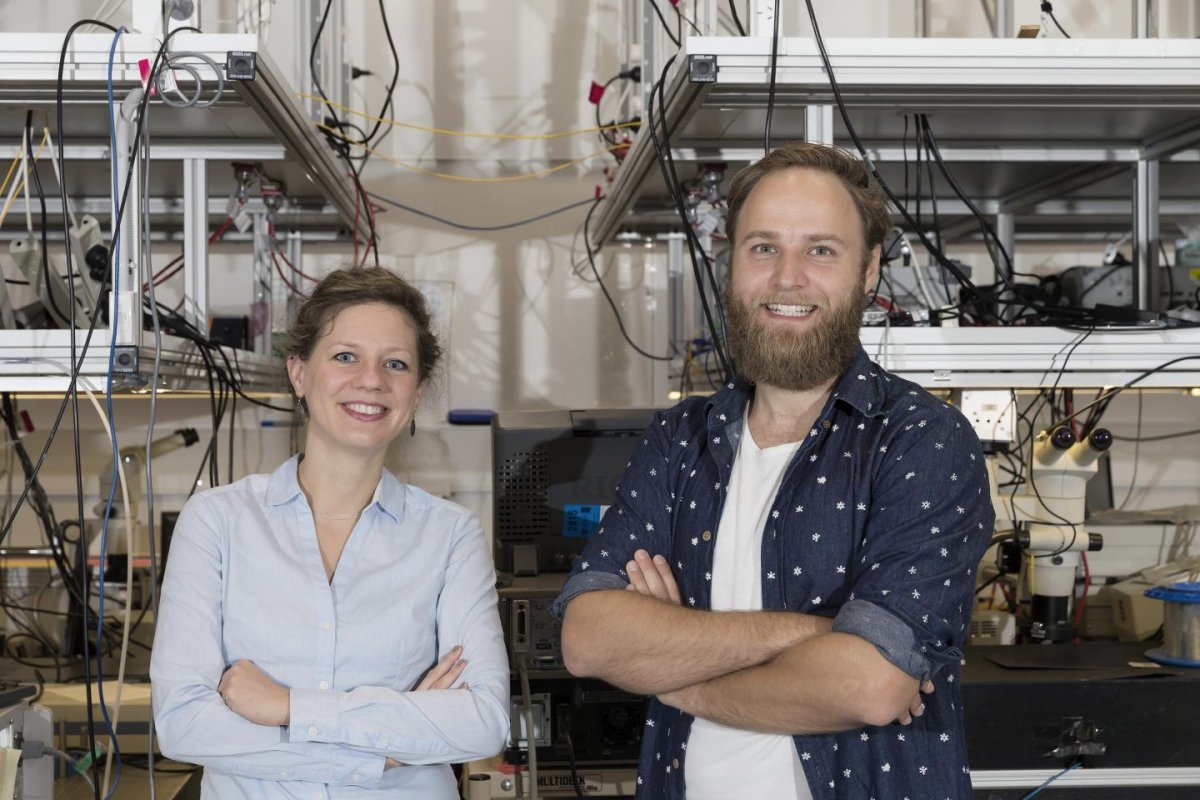
Light and Sound
For the first time, digital information in the form of light waves has been converted into sound waves and placed into a microchip. The conversion process slows down the stored information, making it easier to manipulate within photonic circuits, which are being developed for use in the microchips, which control data using light instead of electrons.
This world-first was accomplished by a team of researchers from the University of Sydney, led by doctoral candidate Moritz Merklein and Dr. Birgit Stiller, with their research published in the journal Nature Communications. Merklein and Stiller are from the ARC Centre of Excellence for Ultrahigh bandwidth Devices for Optical Systems (CUDOS) and the team used the Australian National University’s Laser Physics Centre to design the microchip.

Light is extremely useful when it comes to moving information across a great distance, but its unbeatable speed is also a detriment, as it makes it difficult for computer and telecommunication systems to process the stored information. Speed isn’t useful if the information can’t be processed
This is why sound waves, or rather the conversion from light to sound waves, work so well here. This process slows the information down long enough for it to be processed, before it’s converted back into light waves and sent on its way.
“The information in our chip in acoustic form travels at a velocity five orders of magnitude slower than in the optical domain,” said Stiller. “It is like the difference between thunder and lightning.”
More Efficient
Traditional electronic devices used in telecommunications and optical fiber networks are vulnerable to interference and are capable of producing excessive heat and using too much energy. Implementing light and sound waves on a photonic microchip eliminates these problems — photons are immune to electromagnetic interference, and there is no electronic resistance to produce heat. Additionally, with this process, overall bandwidth is increased and data can always travel at light-speed.
“Our system is not limited to a narrow bandwidth,” added Stiller. “So unlike previous systems this allows us to store and retrieve information at multiple wavelengths simultaneously, vastly increasing the efficiency of the device.”
CUDOS director and professor Benjamin Eggleton, who co-authored the research, said that this work marks an important step forward in optical information processing, saying, “This concept fulfills all requirements for current and future generation optical communication systems.”
Computer systems are only going to continue getting bigger and faster, but the amount of heat that advanced devices create makes them difficult to use and maintain. The successful development of photonic chips, however, has prompted companies like IBM and Intel to explore the possibility of using such chips in their systems. Hopefully, as computers get more powerful, other companies like Microsoft will eventually do the same if only to avoid having inferior hardware.